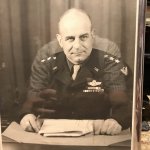Join the Hide community
Get access to live stream, lessons, the post exchange, and chat with other snipers.
Register
Download Gravity Ballistics
Get help to accurately calculate and scope your sniper rifle using real shooting data.

Install the app
How to install the app on iOS
Follow along with the video below to see how to install our site as a web app on your home screen.
Note: This feature may not be available in some browsers.
You are using an out of date browser. It may not display this or other websites correctly.
You should upgrade or use an alternative browser.
You should upgrade or use an alternative browser.
Last Doolittle Raider dies: Lt. Col. Richard “Dick” Cole passes at 103
- Thread starter hermosabeach
- Start date
https://en.wikipedia.org/wiki/Doolittle_Raid
The Doolittle Raid, also known as the Tokyo Raid, on Saturday, April 18, 1942, was an air raid by the United States on the Japanese capital Tokyo and other places on the island of Honshu during World War II, the first air operation to strike the Japanese Home Islands.
It demonstrated that the Japanese mainland was vulnerable to American air attack, served as retaliation for the Japanese attack on Pearl Harbor, and provided an important boost to American morale. The raid was planned and led by Lieutenant Colonel James "Jimmy" Doolittle of the United States Army Air Forces.
Sixteen B-25B Mitchell medium bombers were launched without fighter escort from the U.S. Navy's aircraft carrier USS Hornet (CV-8) deep in the Western Pacific Ocean, each with a crew of five men. The plan called for them to bomb military targets in Japan, and to continue westward to land in China.
Fifteen aircraft reached China, but all crashed, while the 16th landed at Vladivostok in the Soviet Union. Amazingly, 77 of 80 crew members initially survived the mission. Eight airmen were captured by the Japanese Army in China; three of those were later executed. The B-25 that landed in the Soviet Union was confiscated, with its crew interned for more than a year before being allowed to "escape" via Soviet-occupied Iran. Fourteen complete crews of five, except for one crewman who was killed in action, returned either to the United States, or to American forces.
The Doolittle Raid, also known as the Tokyo Raid, on Saturday, April 18, 1942, was an air raid by the United States on the Japanese capital Tokyo and other places on the island of Honshu during World War II, the first air operation to strike the Japanese Home Islands.
It demonstrated that the Japanese mainland was vulnerable to American air attack, served as retaliation for the Japanese attack on Pearl Harbor, and provided an important boost to American morale. The raid was planned and led by Lieutenant Colonel James "Jimmy" Doolittle of the United States Army Air Forces.
Sixteen B-25B Mitchell medium bombers were launched without fighter escort from the U.S. Navy's aircraft carrier USS Hornet (CV-8) deep in the Western Pacific Ocean, each with a crew of five men. The plan called for them to bomb military targets in Japan, and to continue westward to land in China.
Fifteen aircraft reached China, but all crashed, while the 16th landed at Vladivostok in the Soviet Union. Amazingly, 77 of 80 crew members initially survived the mission. Eight airmen were captured by the Japanese Army in China; three of those were later executed. The B-25 that landed in the Soviet Union was confiscated, with its crew interned for more than a year before being allowed to "escape" via Soviet-occupied Iran. Fourteen complete crews of five, except for one crewman who was killed in action, returned either to the United States, or to American forces.
As a grade schooler in the 1950's, these exquisite people were very high among my personal set of heroes.
Greg
Greg
One of my favorite military operations from history. Once that generation is gone we're all fucked.
I couldn’t agree more.One of my favorite military operations from history. Once that generation is gone we're all fucked.
Godspeed sir. General Doolittle awaits.
I met Dick once at a Doolittle reunion when there was still 3 of them left. He was a real gentleman and humble man.
Similar threads
Movie Theater
Cowboys (and others) and their HORSES...updated
- Replies
- 2
- Views
- 3K

